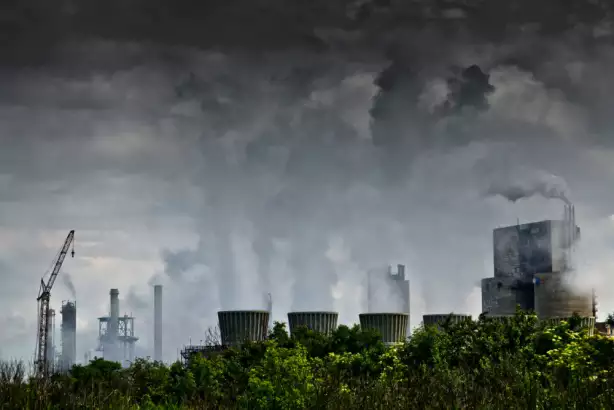What are the maintenance requirements for an RTO in air pollution control?
소개
The Regenerative Thermal Oxidizer (RTO) is a widely used air pollution control technology that helps industries meet emission standards and reduce their environmental impact. As an efficient and cost-effective solution, RTOs require regular maintenance to ensure their optimal performance and longevity. In this article, we will explore the various maintenance requirements for an RTO in air pollution control.
Regular Inspections
– Conduct regular inspections of the RTO to identify any signs of wear, damage, or malfunction.
– Inspect the combustion chambers, heat exchangers, and emission control devices to ensure their proper functioning.
– Check the condition of the insulation and seals to prevent heat loss and air leakage.
– Inspect the control panels, sensors, and valves to detect any electrical or mechanical issues.
– Perform inspections on a scheduled basis to prevent major problems and minimize downtime.
Cleaning and Calibration
– Clean the RTO regularly to remove any accumulated contaminants, such as dirt, dust, or particulate matter.
– Clear the filters, ductwork, and exhaust stacks to maintain optimal airflow and prevent clogging.
– Calibrate the temperature and pressure sensors to ensure accurate readings and efficient operation.
– Clean and adjust the flow control valves to maintain the desired air and gas flow rates.
– Regular cleaning and calibration help maximize the RTO’s performance and minimize energy consumption.
Heat Recovery Media Maintenance
– Monitor the condition of the ceramic or metallic heat recovery media inside the RTO.
– Clean the media regularly to remove any fouling or deposits that can reduce heat transfer efficiency.
– Inspect for any cracks or damage in the media and replace as necessary.
– Optimize the media configuration and arrangement to achieve maximum heat recovery efficiency.
– Proper maintenance of the heat recovery media enhances the RTO’s energy efficiency and reduces operating costs.
Electrical and Control System Maintenance
– Regularly inspect and clean the electrical components, such as wiring, connectors, and relays.
– Check the control system software and firmware for updates or compatibility issues.
– Test the emergency shutdown systems to ensure their proper operation in case of any safety concerns.
– Conduct preventive maintenance on the control panels, motors, and drives to avoid unexpected failures.
– Proper maintenance of the electrical and control systems guarantees the safety and reliability of the RTO.
결론
In conclusion, maintaining an RTO in air pollution control is crucial for its efficient and reliable operation. Regular inspections, cleaning, and calibration, as well as heat recovery media and electrical system maintenance, are essential to maximize the RTO’s performance and longevity. By following these maintenance requirements, industries can ensure compliance with emission standards and contribute to a cleaner and healthier environment.


회사 소개
We are a high-end equipment manufacturing enterprise specializing in comprehensive control of volatile organic compounds (VOCs) exhaust and carbon reduction energy-saving technology. Our core technologies include thermal energy, combustion, sealing, and control, as well as capabilities in temperature field simulation, air flow field simulation modeling, ceramic heat storage material performance, molecular sieve adsorption material selection, and VOCs high-temperature incineration oxidation experimental testing.
Our team advantages include a RTO technology research and development center and waste gas carbon reduction engineering technology center in Xi’an, as well as a 30,000©O production base in Yangling. We are a leading manufacturer of RTO equipment and molecular sieve rotary equipment in terms of production and sales worldwide. Our core technical team comes from the Aerospace Liquid Rocket Engine Research Institute (Aerospace Sixth Institute). We currently have more than 360 employees, including over 60 research and development technical backbones, including 3 senior engineers at the research fellow level, 6 senior engineers, and 47 thermodynamics doctors.
Our core products are the rotating valve regenerative thermal oxidizer (RTO) and molecular sieve adsorption concentration wheel. Combined with our expertise in environmental protection and thermal energy system engineering technology, we can provide customers with comprehensive industrial waste gas treatment and heat energy utilization carbon reduction solutions for various operating conditions.
인증, 특허 및 영예
Our company has obtained the following certifications and qualifications, as well as patents and honors:
- 지식재산권 관리체계 인증
- 품질경영시스템 인증
- 환경경영시스템 인증
- 건설산업기업자격
- 하이테크 기업
- Patent for Rotary Heat Storage Oxidation Furnace Steering Valve
- Patent for Rotary Heat Incineration Equipment
- Patent for Disc Zeolite Rotary Wheel

올바른 RTO 장비 선택
When selecting suitable RTO equipment, consider the following:
- Determine the characteristics of the exhaust gas
- Understand the local regulations and emission standards
- 에너지 효율성 평가
- 운영 및 유지 관리를 고려하세요
- Budget and cost analysis
- 적절한 RTO 유형을 선택하세요
- 환경 및 안전 요소를 고려하세요
- Performance testing and verification

RTO Air Pollution Control Service Process
Our RTO air pollution control service process includes the following steps:
- Preliminary consultation, site inspection, and needs analysis
- 솔루션 설계, 시뮬레이션 모델링 및 솔루션 검토
- 맞춤형 생산, 품질 관리 및 공장 테스트
- 현장 설치, 시운전 및 교육 서비스
- 정기적인 유지관리, 기술지원, 예비부품 공급
We are a one-stop solution for RTO air pollution control, and our professional team customizes RTO solutions for our customers.
저자: 미야
